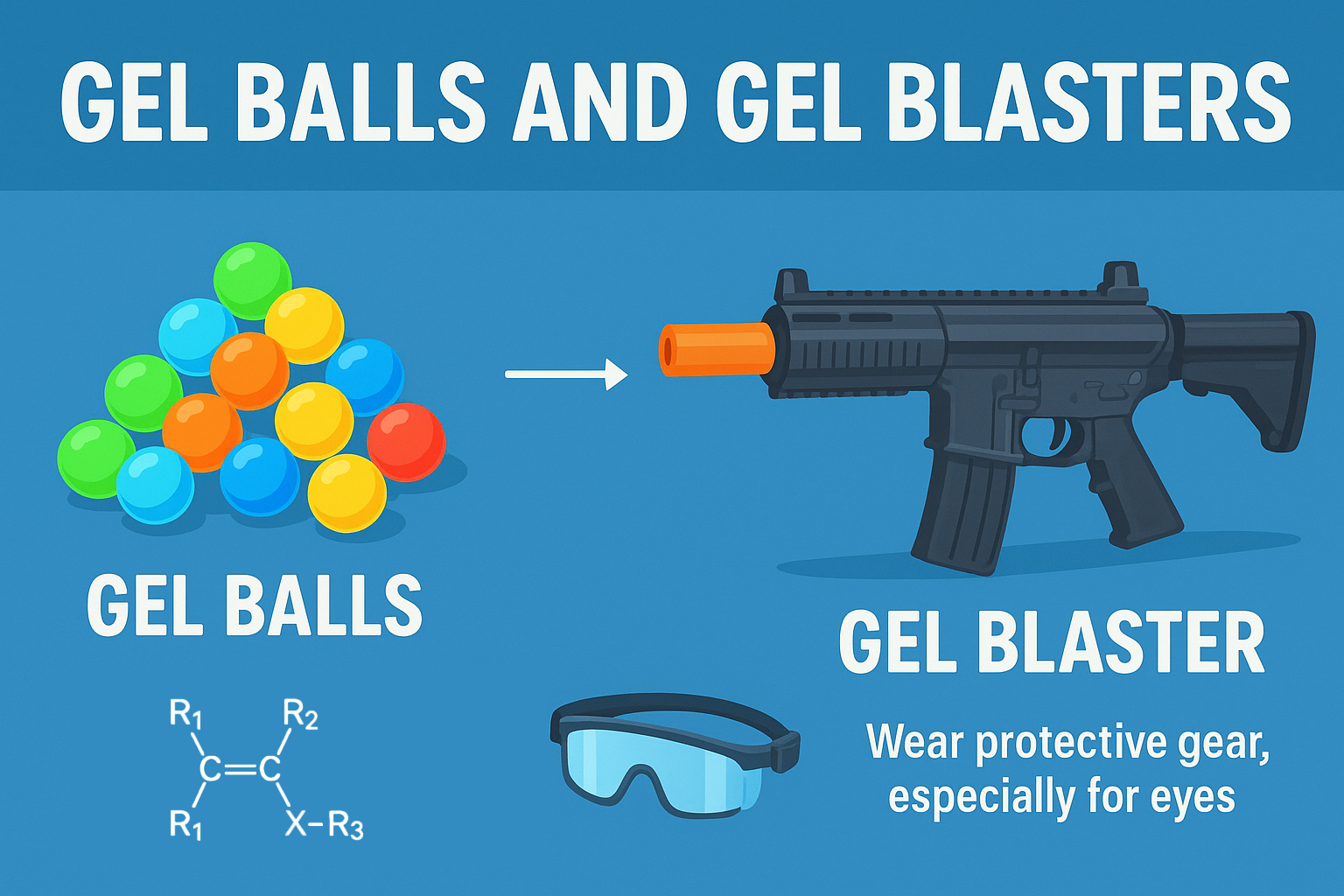
Gel Balls Guide: Science, Composition, and Environmental Impact of Hydrogel Ammo
Learn what gel balls are made of, how they expand, and why they’re safe, non-toxic, and biodegradable. Discover gel ball types, storage tips, and best options for your gel blaster.
What Are Gel Balls? (Hydrogel Ammo Explained)
Gel balls, also known as water beads for gel blasters or hydrogel ammo, are soft polymer spheres designed for safe recreational use. Unlike plastic BB pellets, gel balls are non-toxic, biodegradable, and shatter on impact, making them safer for both kids (with supervision) and adults.
Dry gel balls measure 2–3 mm, but after soaking they expand to 7–8 mm, reaching over 200 times their original size.
Chemical Composition of Gel Balls
Core Materials
Most gel blaster balls are made of superabsorbent polymers (SAPs), such as sodium polyacrylate, which can absorb and retain large amounts of water.
Polymerization Reaction:

Partial neutralization produces sodium polyacrylate:

For a detailed reference of the chemical reactions, see CN115947901B – Polymer Synthesis of Hydrogel
Additives in Gel Balls:
- Colorants – pigments, glow powders, or UV-reactive agents.
- Stabilizers – PEG, PVP, or cellulose derivatives to control swelling.
How Do Gel Balls Expand in Water?
The swelling occurs because hydrophilic groups (–COOH, –COONa) attract water molecules, which diffuse into the polymer network.
- Low crosslink density → softer, fragile gel balls.
- High crosslink density → harder gel balls, ideal for high-velocity gel blasters.
Gel Ball Types
- Standard Gel Balls: Soft and compatible with most blasters.
- Glow in the Dark Gel Balls: Contain phosphorescent powders for nighttime play.
- Hard Gel Balls: Reduce breakage in high-velocity blasters.
- Matte / Textured Gel Balls: Suitable for pistol-type blasters due to stable swelling and rigidity.
Safety Considerations
Gel balls are non-toxic and safe on skin, but not edible.
- Children under 14 should never play unsupervised.
- Swallowing risk: Gel balls, when soaked, typically reach a saturation size of 7–8 mm. After reaching 8 mm, they will not expand further, but swallowing them can still cause gastrointestinal blockage, so ingestion must be strictly avoided.
For authoritative guidance on ingestion risk, see Nationwide Children’s Hospital – Water Beads Safety Alert 🔗
Always wear eye protection when playing with gel blasters.
Environmental Impact of Gel Balls
Unlike plastic pellets, gel balls are biodegradable:
- Desiccation – Loss of water.
- UV Photodegradation – Sunlight weakens polymer chains.
- Microbial Decomposition – Soil bacteria reduce residues to harmless salts.
End products: water + salts, leaving minimal environmental impact.
FAQ About Gel Balls
Do gel balls hurt?
They feel like a rubber band snap. Minor sting but no lasting damage.
How long should I soak gel balls?
Soak for 3–4 hours until 7–8 mm.
Are gel balls reusable?
No, once used, they shatter or dry out. Always use fresh hydrated balls.
Are gel balls safe for kids?
Yes, with supervision. Never allow children to swallow them.
Are gel balls biodegradable?
Yes, they eventually break down into water and salts.
Secure Payments
Exclusive Discounts
After-Sales Support
Price Match Support
Fast Global Delivery
CN Warehouse • 10-20 Day Delivery